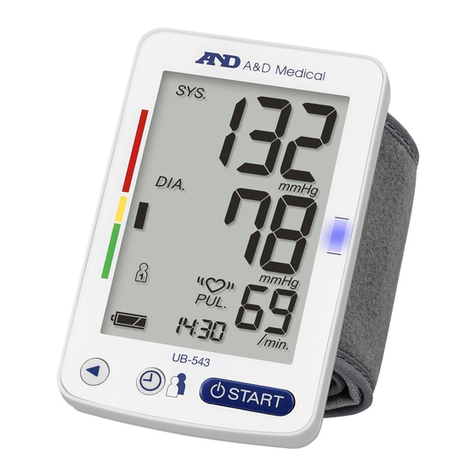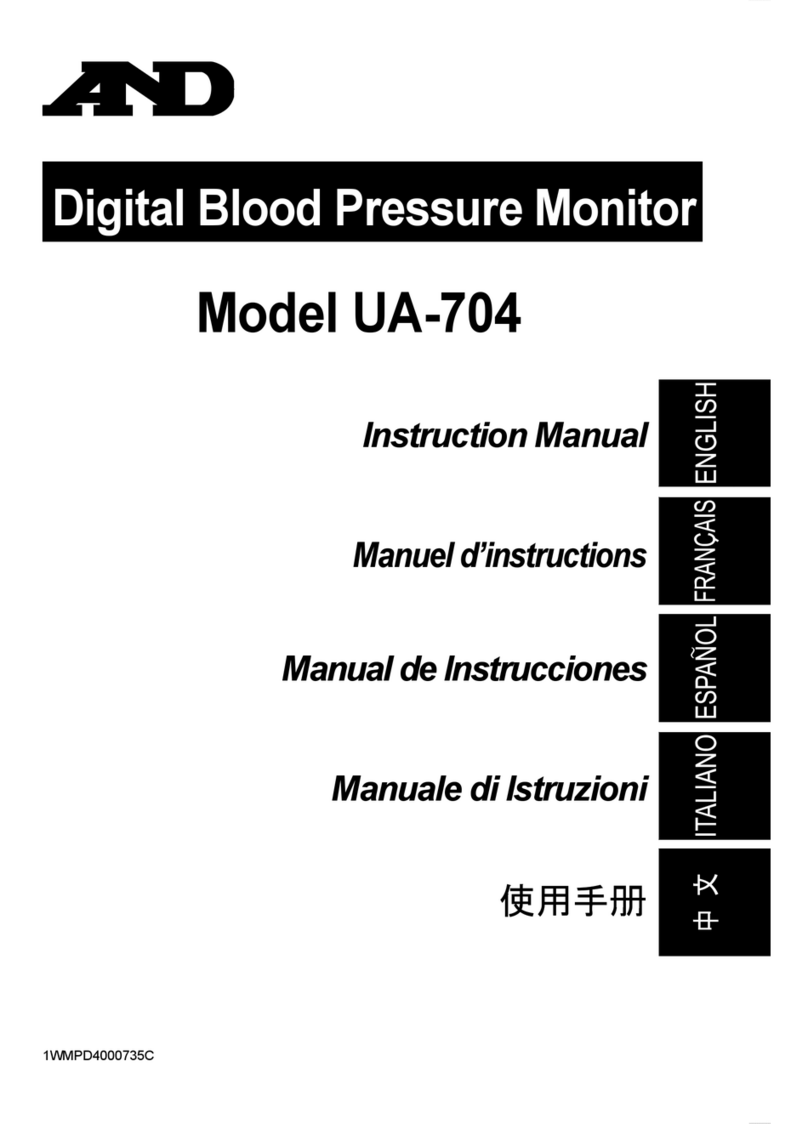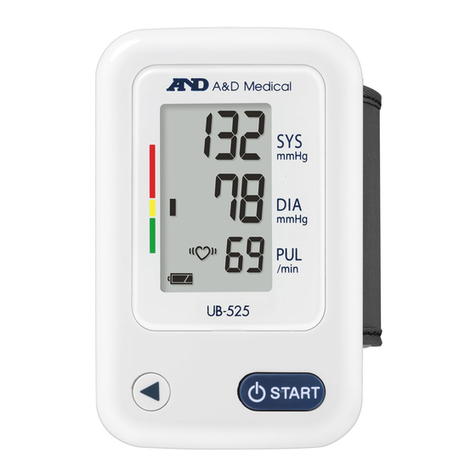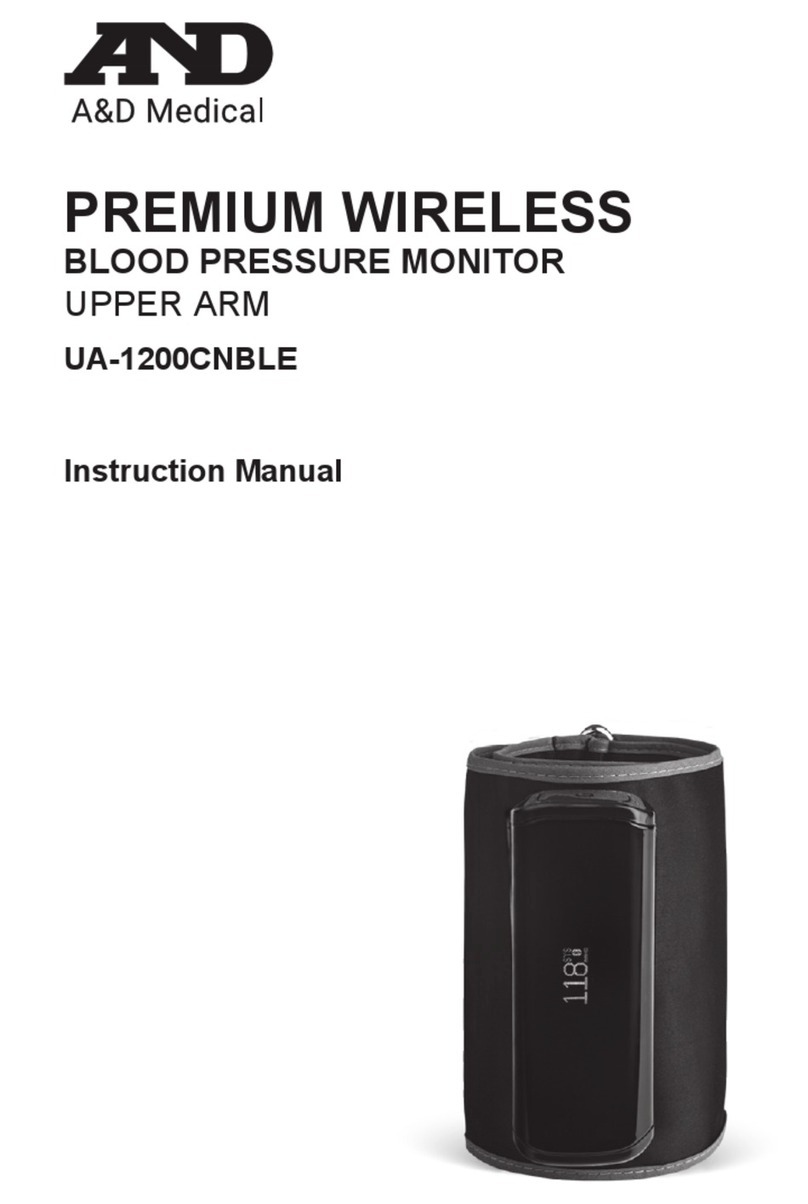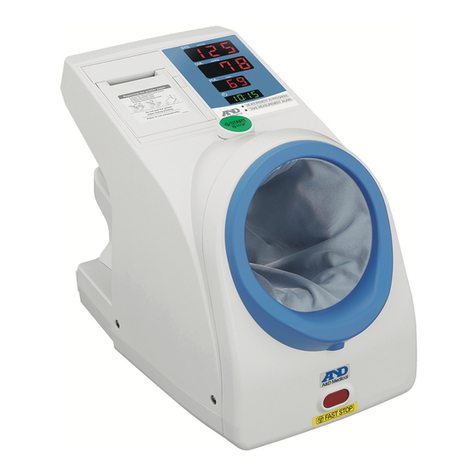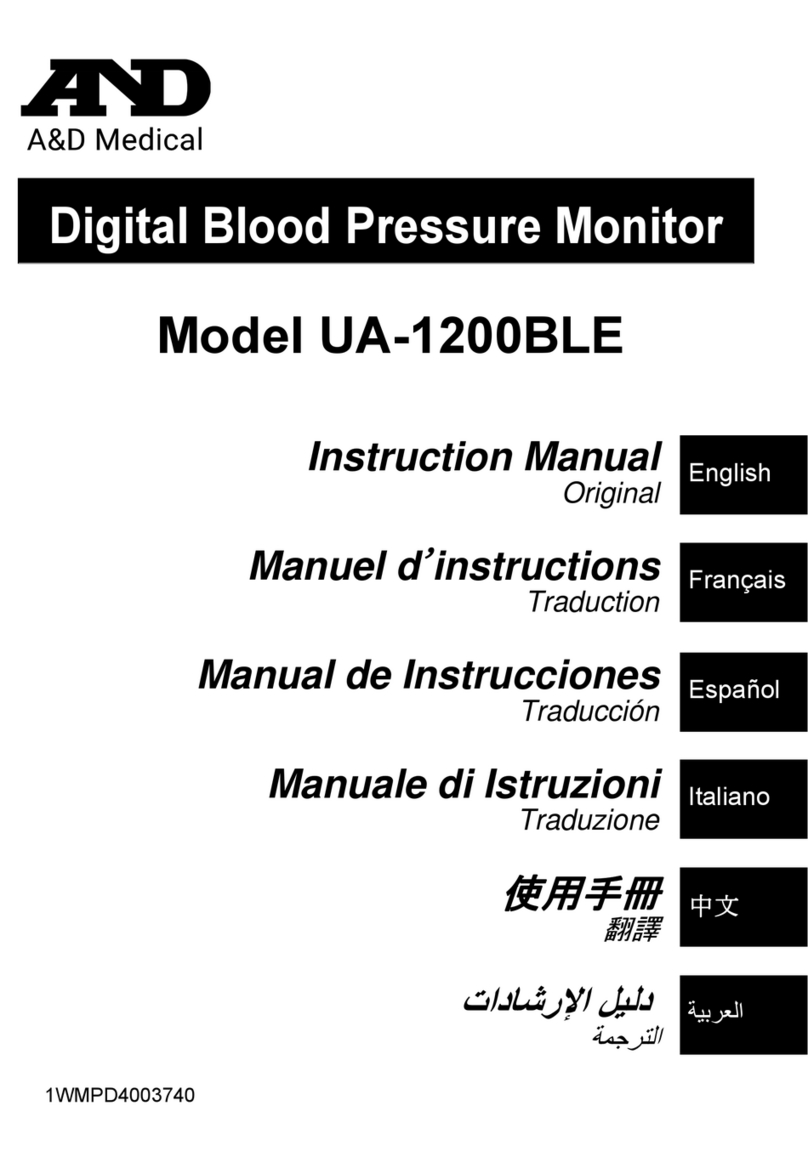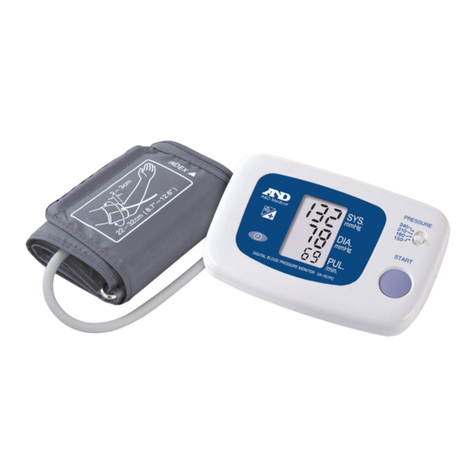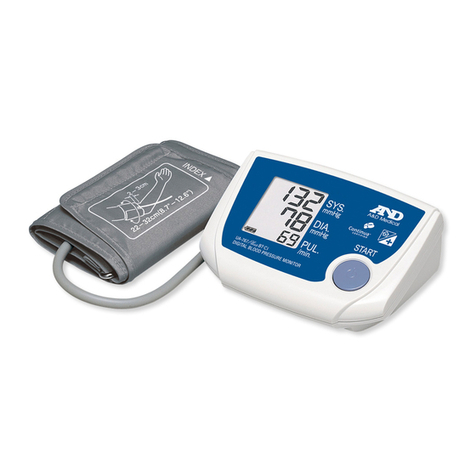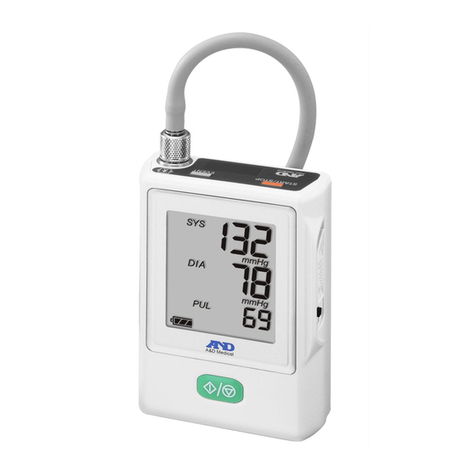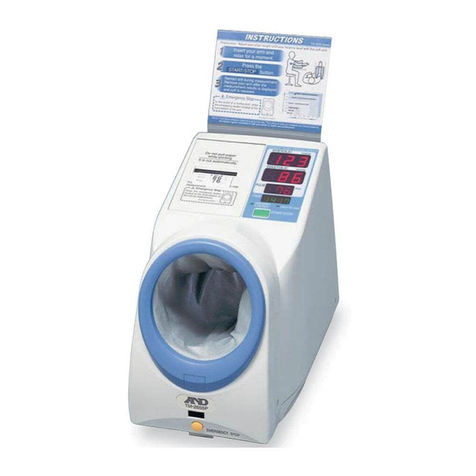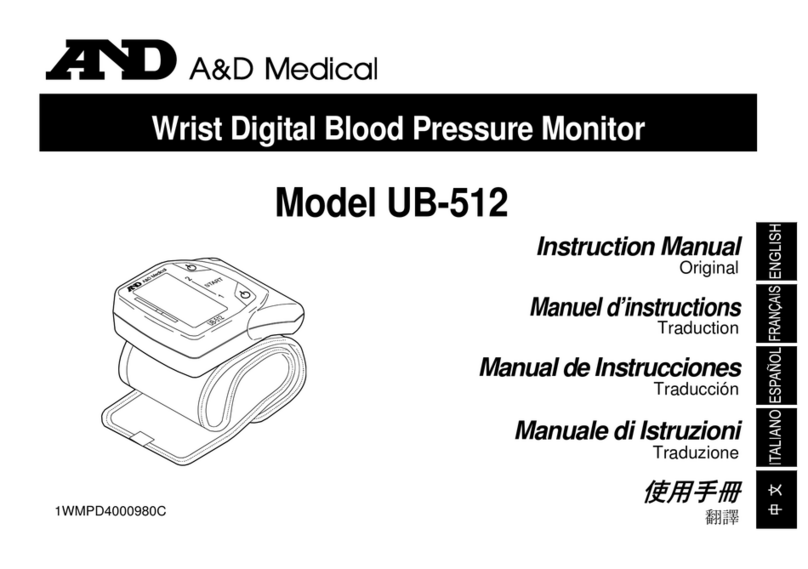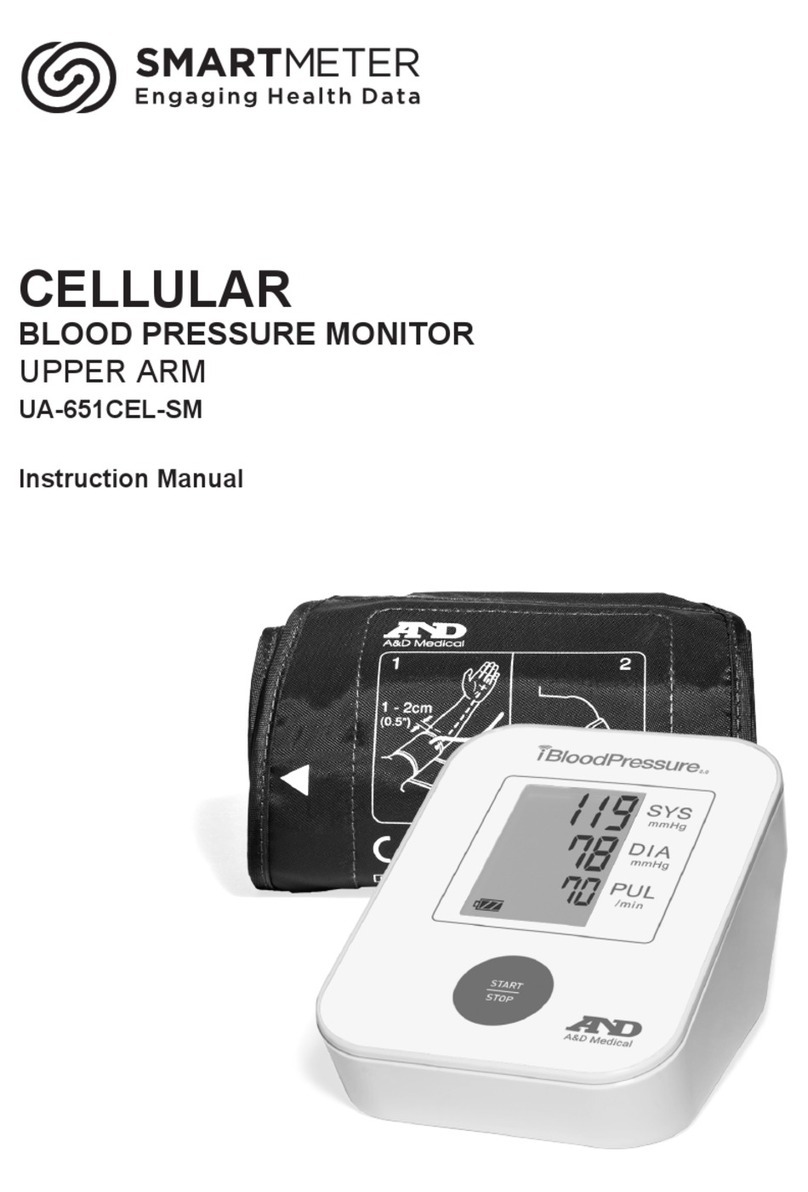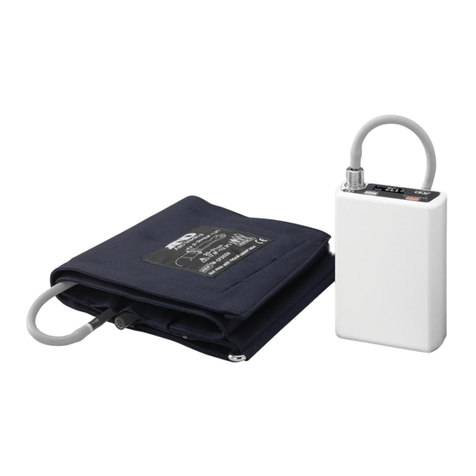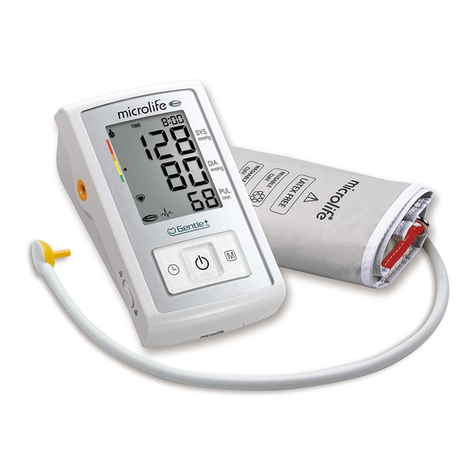
English 5
Before Use
Make sure that the device works correctly and that measurement values
are accurate.
Make sure that the cuff and air hoses are properly connected.
Check and maintain the cleanliness of the parts in direct contact with the patient.
Avoid placing the device near a strong magnetic field or static electricity.
Avoid placing the device near high frequency surgical equipment.
When reusing the device, confirm that the device is clean.
During Use
This device was not designed for patients' own use so care must be taken
to ensure accurate results and to avoid possible accidents.
Regularly confirm patient status when measurement is performed
frequently or for a long time. Otherwise, damage may be caused due to
peripheral arterial disease.
Stop using the device immediately, if the patient feels pain during a
measurement or if the device does not work properly.
Stop using the device if you notice any abnormalities (for example; liquid
inside the device) and request a full service.
To measure blood pressure, the arm must be squeezed by the cuff hard
enough to temporarily stop blood flow through the artery. This may cause
pain, numbness or a temporary red mark to the arm. This condition will
appear especially when measurement is repeated successively.
Any pain, numbness, or red marks will disappear with time.
This is a device which needs to handle with care. Strong impact may result
in malfunction of the device.
Be careful not to get hurt when handling the damaged device.
Do not replace the batteries while the device is in use.
Do not touch the batteries and the patient at the same time.
Should the batteries short-circuit, they may become hot and potentially
cause malfunctions and scalding.
Use the device so that the air hose is not bent or blocked. Using the cuff
with the air hose kinked or bent may result in peripheral circulatory failure
due to hemostasis in the arm (caused by air remaining in the cuff).
After Use
Clean the device, cuff and accessories with a dry, soft cloth or a wet cloth
with water or a neutral detergent. Do not pull or kink the hoses. Do not use
any organic solvent, (antiseptic solution or other harsh chemicals) to clean
the device, cuff or accessories.
Press START/STOP button to turn off the power after measurement.
Keep the original box for further transportation after purchasing the device.
Be careful not to get your fingers caught when folding the device.
